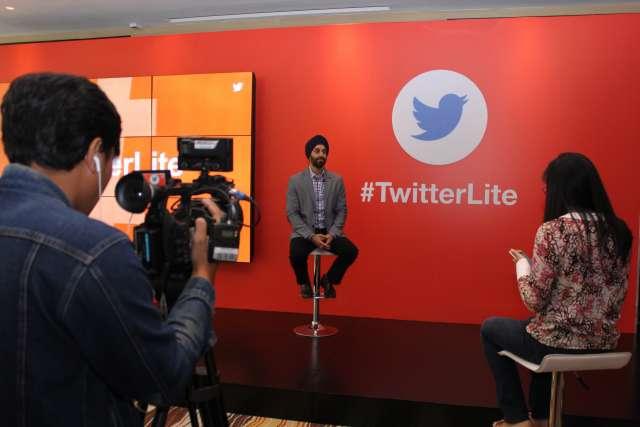Ten years since its inception, Twitter – often known as the SMS of the Internet – has recorded a profitable quarter. Twitter is increasingly being seen as the source to get your news from – even the tagline says, ‘it’s what’s happening! But what is really happening with Twitter – how is the growth been like and how it’s upping its game to attract marketeers and engage consumers. Marketeers talked to Arvinder Gujral, Southeast Asia Managing Director at Twitter to talk about this and more.
Twitter has made big news recently with the first-ever profitable quarter. Your thoughts? How much of it is attributable to Asia?
I’m very proud of what we, as a team, have achieved. We made significant progress in 2017 – improving our discipline and focus, building and shipping product changes more rapidly to simplify our service and make Twitter safer, and we further strengthened our position as the best place to see and talk about what’s happening in the world South-East Asia is an important region for Twitter and a strong engine of growth.
We’re excited about the multiple business opportunities across the region. Indonesia is among the largest Internet, social media and mobile markets worldwide and it is an important audience market for us too, along with Philippines, Thailand, Malaysia
focused on building products that make Twitter faster and easier to use, improving our core ad offerings, and further expanding our business across new channels of demand.
Even though the company has recorded profit, Twitter’s net user base has not grown much. Your thoughts?
Twitter is growing. We drove continued double digit Daily Active Usage (DAU) growth and showed strong product innovation. We launched new features to help people discover and talk about what’s happening on Twitter, including making it easier to thread Tweets and expanding the character limit to 280 characters for more people around the world. Monthly active usage (MAU) grew 4% DAU grew 12% year-over-year, marking our fifth consecutive quarter of double-digit year-over-year growth.
Twitter has never been more important than it is now. It’s where people go first, especially millennials, when they want to know or share about what’s happening around the world. When the presidential or gubernatorial candidates want to make news, they turn to Twitter first. When athletes want to celebrate, vent, or even retire, they turn to Twitter first. When a marketer wants to reach an audience in the moment of relevance, they turn to Twitter first.
Twitter has recently increased the character count of its tweet. What inspired the move and has it changed the way users engage with Twitter?
After successfully piloting a test that expanded the 140 character limit in September 2017, we announced the roll out of the 280 character limit in November 2017. The character limit expansion applies to languages where cramming was an issue.
We found that only 5% of Tweets sent were longer than 140 characters and only 2% were over 190 characters. For reference, a 190 character Tweet is about the same size as Tweets containing an image, poll, or Quote Tweet. With this change, you’ll still see about the same amount of Tweets in your timeline. Historically, 9% of Tweets in English hit the character limit.
This reflects the challenge of fitting a thought into a Tweet, often resulting in lots of time spent editing and even at times abandoning Tweets before sending. With the expanded character count, this problem was massively reduced – that number dropped to only 1% of Tweets running up against the limit.
Since Tweets hit the character limit less often, we observed that people spent less time editing their Tweets in the composer. This shows that more space makes it easier for people to fit thoughts in a Tweet.
Everyone should be able to easily express themselves on Twitter, no matter what language they speak. But not all languages can convey the same amount of information in the same amount of characters. Because of this we are raising the character limit to 280 for people Tweeting all languages except Japanese, Korean, Chinese. The limit for these languages with denser writing systems will remain at 140 characters.
Twitter faces censorship in several countries, and even though Twitter officially supports it by taking active action against potentially offensive content, there are some who feel this could be threatening free speech and exercising control. How do you look at the issue?
We can’t comment on the specifics of government’s initiatives on social media, but we can say that we engage with governments all over the world, as required, while defending and respecting the voices of people who use Twitter to join the world’s conversation. We look forward to continuing engagement with the governments in the region, as they seek input from the tech industry with regards to draft regulations.
Finally, we have dedicated government and law enforcement reporting channels for illegal content. These channels are vital for all actors, and help to solidify user trust, promote transparency, and guarantee business efficiency.
Social media these days brings increased attention on societal issues. But the same social media is also criticized for promoting ‘slacktivism’ – instead of bringing real change on the ground, people who may feel they did their job by sharing a tweet or liking a post.
I believe each movement starts with a single person, a single thought and a single word. Twitter allows freedom of that expression. For any societal issue to move forward the first big hurdle to cross is getting mass awareness. Twitter plays a vital role here. Without a minimum quorum of awareness it is very difficult to rally support for a societal cause.
We have seen many examples play out on Twitter where the collective string voice of the crowd becomes a topic that even mainstream media picks up and becomes part of a national conversation, leading to action on the ground.
Digital advertising is gaining steam but concerns on monetization remain. What does Twitter offer to brands as a platform to engage with their customers?
Marketeers believe in our positioning: Twitter is what’s happening and what people are talking about right now. And it’s the best place for brands to surround, elevate and be what’s happening. We’re focusing our investments on products that strengthen Twitter’s unique value proposition for marketers, specifically in Live and video.
Live video efforts (both premium partnerships and Periscope) are having a big impact on Twitter. We’ve had great success from video – it’s our top revenue generating ad format for the sixth consecutive quarter and grew as a percent of total revenue in Q4. We’re confident we will win in LIVE because we have the best product, the best team, the best conversation and we are the best at showing what is happening in the world.
We are also innovating our live Content Discovery, integrating more live video into Moments and the Explore tab to make it easier for people to watch live events unfold. We are also testing Happening Now, a carousel of events, targeted just for consumers, at the top of the home timeline. To start, people will see only sporting events but premium live video, as well as events like TV or award shows, will be rolled out in the coming months.
What are your thoughts on the bots issue? People say there could be millions of fake accounts and their proliferation could be bad for businesses as well as in furthering propaganda…
We continue to fight hard to tackle any malicious automation on our platform as well as false or spam accounts. Our company does not proactively review accounts to see if they were impersonating other users. Instead, our company’s efforts are focused on identifying and suspending accounts that violate our spam policies. In December, for example, we identified an average of 6.4 million suspicious accounts each week. We take the action of suspending an account from the platform very seriously.
Twitter is usually seen as a place to get your breaking news from. Is that a desired positioning?
Twitter is the best way for people to see what’s happening in the world and to talk about it. From breaking news and entertainment to sports, politics, and everyday interests, people can see every side of the story. You can be anywhere in the world, but will still be able to know what’s currently happening in other parts of the world real-time. And that can only happen on Twitter.
What are your unique observations about Twitter’s market and consumer base is Asia?
South-East Asia has one of the world’s youngest and fast-growing population, with high mobile penetration (close to or more than 100%) in almost all markets. Our consumer base in this region is largely filled by millennials who love to create and share visual content. In fact, 60% of all millennials (ages 16-24) worldwide will reside in Asia by 2020.
Indonesia is among the largest Internet, social media and mobile markets worldwide. Entertainment, Sports and Politics across the region, from Kpop to football to national elections, are global conversations and audience growth drivers on our platform.
Edited by Priyanka Sekhawat



